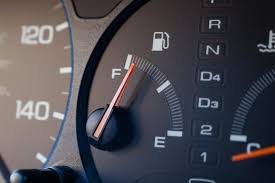
Breaking News
Why Are We Devolving America's Western Culture?
 Vile Leftists Target and Mock Disabled Elderly Woman Leaving Riley Gaines TPUSA Event:
Vile Leftists Target and Mock Disabled Elderly Woman Leaving Riley Gaines TPUSA Event:
 "Leveraging Data to Empower Drivers"
"Leveraging Data to Empower Drivers"
Top Tech News
 Cab-less truck glider leaps autonomously between road and rail
Cab-less truck glider leaps autonomously between road and rail
 Can Tesla DOJO Chips Pass Nvidia GPUs?
Can Tesla DOJO Chips Pass Nvidia GPUs?
 Iron-fortified lumber could be a greener alternative to steel beams
Iron-fortified lumber could be a greener alternative to steel beams
 One man, 856 venom hits, and the path to a universal snakebite cure
One man, 856 venom hits, and the path to a universal snakebite cure
 Dr. McCullough reveals cancer-fighting drug Big Pharma hopes you never hear about…
Dr. McCullough reveals cancer-fighting drug Big Pharma hopes you never hear about…
 EXCLUSIVE: Raytheon Whistleblower Who Exposed The Neutrino Earthquake Weapon In Antarctica...
EXCLUSIVE: Raytheon Whistleblower Who Exposed The Neutrino Earthquake Weapon In Antarctica...
 Doctors Say Injecting Gold Into Eyeballs Could Restore Lost Vision
Doctors Say Injecting Gold Into Eyeballs Could Restore Lost Vision
 Dark Matter: An 86-lb, 800-hp EV motor by Koenigsegg
Dark Matter: An 86-lb, 800-hp EV motor by Koenigsegg
 Spacetop puts a massive multi-window workspace in front of your eyes
Spacetop puts a massive multi-window workspace in front of your eyes
What Trump Could Do to Increase Gas Mileage

No matter how much this costs us. And for about the past 40 years, the federal government has been making gas less efficient – via federal regulations requiring that gasoline be adulterated with what are styled "oxygenates."
These "oxygenates" – most notoriously (but not exclusively) ethanol alcohol – were introduced into the gas supply back in the late '70s as clumsy emissions control measure. The idea was that by leaning out the gas-mix fed to the engines of that era, they would burn more "cleanly" – i.e., emissions of pollution-causing combustion byproducts would be reduced, because they were burning less gas (10 percent less, because "gas" was now only 90 percent gasoline and ten percent ethanol or some other "oxygenate").
Hence the "E10" fuel that is now what you get when you buy "gas" pretty much anywhere.
But engines burned more of this fuel. Because ethanol-laced "gas" contains less energy than 100 percent gas – because alcohol has a lower BTU content than gasoline. Thus, gas mileage went down – by about 3-5 percent. People who were driving at the time noticed this not-small decrease in gas mileage because they remembered the mileage their cars delivered when they were burning 100 percent gasoline.
But – so it was argued – this decrease in gas mileage was worth the decrease in exhaust emissions. Perhaps it was.
But is it still worth it?
The answer is no – it isn't. Because "oxygenating" gas is literally worthless now – at least in terms of reducing vehicle exhaust emissions. It has been worthless for almost 40 years, too. They why has to do with the fact that very shortly after the federal government began to require the adulteration of gasoline with "oxygenates" back in the mid-late 1970s, mechanical fuel delivery systems – carburetors – began to be supplanted by electronically controlled fuel delivery systems (i.e., electronic fuel injection). The latter – which had become standard equipment in every new vehicle sold in America by the late 1980s – is capable of adjusting the air-fuel ratio richer (more gas in the mix) or leaner (less gas in the mix) to achieve maximum-possible fuel efficiency and lowest-possible emissions.
Carburetors generally cannot do this.
They are mechanically set to run a certain way – typically via enrichment screws and little orifices called jets. If you feed a carbureted engine a leaner fuel mix – an "oxygenated" fuel mix – it will run leaner. Because the fuel mix is leaner. The carb cannot adjust itself to compensate for the leaner fuel mix.

 Peak Sun Hours Tutorial
Peak Sun Hours Tutorial Node without Consent
Node without Consent

